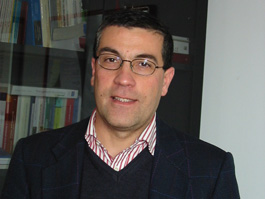On February 22, 2013 Professor Michele Bernasconi (Università “CàFoscari”, Venice, Italy) presented his paper “Tax Evasion: Does fiscal pressure matter? Lessons from the behavioral economics”, which was co-authored by Luca Corazzini and Raffaello Seri, to ISET students, researchers and faculty.
Professor Bernasconi started his presentation by reviewing previous theories that have sought to explain the phenomenon of tax evasion. On the one hand, the classical Expected Utility (EU) approach predicts that in most countries all the taxpayers would evade at least some part of taxes and that there is a positive relationship between the tax rate and tax compliance (i.e. more taxes, less evasion).
On the other hand,thanks to the subjective weighting of probabilities, the Cumulative Prospect Theory (CPT) is capable of explaining what we actually observe – full compliance of most of taxpayers.
In the second part of his presentation, Professor Bernasconi moved on to provide an explanation of his model. The co-authors improved the explanatory power of CPT by modeling a reference point that adapts over time and adapts more quickly to positive changes rather than to negative changes. In addition, they also introduced a “morality” parameter. The results of this theory were tested using experimental and regression analysis.
The policy implications of the results attracted special interestfrom the audience. According to the model, in the long-run tax rates are unlikely to influence tax evasion, with “morality” being one of the main determinants of this decision. As for the short-run, an increase in the tax rate induces tax evasion and may even lead to a vicious circle of high taxes and high evasion.As for a decline in taxes, the model does not support the possibility of a virtuous circle mostly due to asymmetries in adaptation.The main message of the presentation, as well as the paper, was that a volatile tax rate is not a good instrument for inducing tax compliance. In other words, “an old tax is no tax” (Bastable, 1892).
The presentation finished with a lively discussion about the potential extensions of the model.
ISET would like to thank Professor Bernasconi for his presentation and will be happy to host him again in the future.











